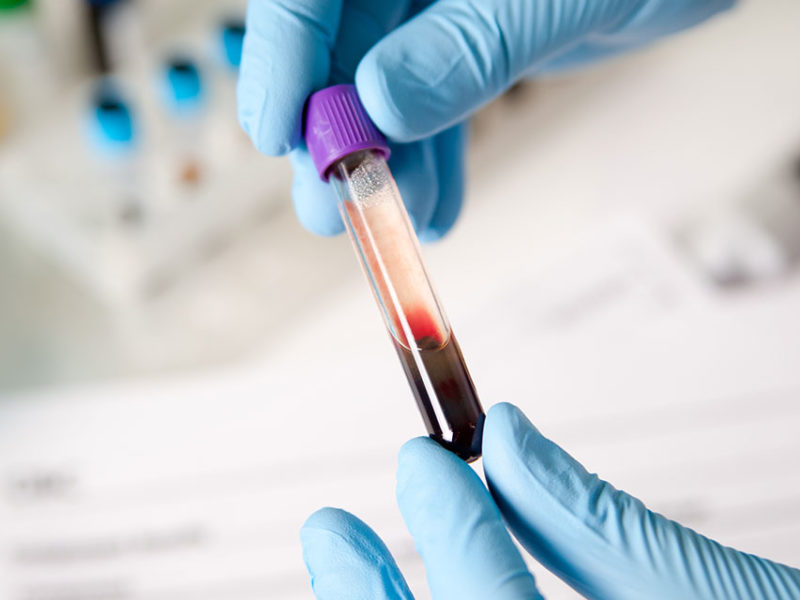Many Respiratory Pathogens, One Test: The Respiratory Infection Array
Many Respiratory Pathogens, One Test: The Respiratory Infection Array https://pediatricsnationwide.org/wp-content/themes/corpus/images/empty/thumbnail.jpg 150 150 Jeb Phillips Jeb Phillips https://pediatricsnationwide.org/wp-content/uploads/2021/03/Jeb-Phillips.jpg- December 13, 2016
- Jeb Phillips
A multiplex polymerase chain reaction assay newly available for outpatients is faster and more comprehensive than conventional testing for causes of upper respiratory infection.
‘Tis the season for coughs, runny noses and the challenge of trying to pinpoint which pathogen is causing your patient’s particular upper respiratory infection. Clinical presentations are similar for a number of upper respiratory infections, so laboratory testing can be crucial in determining which treatment approach will be most effective. Conventional testing has its own set of issues, however. Rapid antigen tests for respiratory syncytial virus (RSV) and Influenza A and B can have reduced sensitivity; direct fluorescent antibody tests can have better sensitivity, but they take substantially longer.
Enter the Respiratory Infection Array. Initially approved by the U.S. Food and Drug Administration in 2011, the array has been used with inpatients at Nationwide Children’s Hospital for years. Laboratory Services at Nationwide Children’s has now made it available for outpatient use as well.
“The Respiratory Infection Array is more comprehensive, and in most cases more sensitive and specific, than other tests,” says Stella Antonara, PhD, assistant director of Clinical Microbiology and Immunoserology at Nationwide Children’s Hospital. “Turnaround time is often only a few hours, meaning providers can initiate treatment very quickly.”
A 2015 study from the Emory University School of Medicine found that the array helped decrease antibiotic use, length of inpatient stay and time of isolation in pediatric patients admitted to the hospital with an acute respiratory tract illness.
The array detects eight viral and three bacterial targets and also can detect coinfections:
- Adenovirus
- Coronavirus
- Human metapneumovirus
- Rhinovirus/enterovirus
- Influenza A
- Influenza B
- Parainfluenza virus 1-4
- RSV
- Bordetella pertussis
- Chlamydophila pneumoniae
- Mycoplasma pneumoniae
The array has slightly reduced sensitivity for adenovirus and Mycoplasma pneumoniae compared to singleplex PCR and does not include Bordetella parapertussis. In a seriously ill patient, a provider may consider confirming negative results with single PCR tests.
For more information about how to collect samples and order the test, visit NationwideChildrens.org/Lab.
Reference:
Rogers BB, Shankar P, Jerris RC, Kotzbauer D, Anderson EJ, Watson JR, O’Brien LA, Uwindatwa F, McNamara K, Bost JE. Impact of a rapid respiratory panel test on patient outcomes. Archives of Pathology and Laboratory Medicine. 2015 May;139(5):636-41.
About the author
Jeb is the Managing Editor, Executive Communications, in the Department of Marketing and Public Relations at Nationwide Children's Hospital. He contributes feature stories and research news to PediatricsOnline, the hospital’s electronic newsletter for physicians and other health care providers, and to Pediatrics Nationwide. He has served as a communications specialist at the Center for Injury Research and Policy at The Research Institute and came to Nationwide Children’s after 14-year career as daily newspaper reporter, most recently at The Columbus Dispatch.
-
Jeb Phillipshttps://pediatricsnationwide.org/author/jeb-phillips/October 13, 2015
-
Jeb Phillipshttps://pediatricsnationwide.org/author/jeb-phillips/
-
Jeb Phillipshttps://pediatricsnationwide.org/author/jeb-phillips/November 24, 2015
-
Jeb Phillipshttps://pediatricsnationwide.org/author/jeb-phillips/January 19, 2016
- Posted In:
- In Brief







